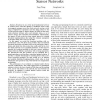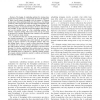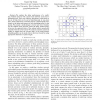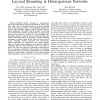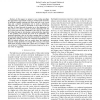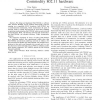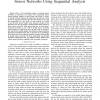INFOCOM
2009
IEEE
14 years 6 months ago
2009
IEEE
—Broadcast is one of the most fundamental services in wireless sensor networks (WSNs). It facilitates sensor nodes to propagate messages across the whole network, serving a wide ...
INFOCOM
2009
IEEE
14 years 6 months ago
2009
IEEE
—The design of scheduling policies for wireless data systems has been driven by a compromise between the objectives of high overall system throughput and the degree of fairness a...
INFOCOM
2009
IEEE
14 years 6 months ago
2009
IEEE
Abstract—Recently, cellular phone networks have begun allowing third-party applications to run over certain open-API phone operating systems such as Windows Mobile, Iphone and Go...
INFOCOM
2009
IEEE
14 years 6 months ago
2009
IEEE
Abstract—We analyze the delay performance of a multihop wireless network with a fixed route between each sourcedestination pair. There are arbitrary interference constraints on ...
INFOCOM
2009
IEEE
14 years 6 months ago
2009
IEEE
— We study the problem of shortest-path geographic routing in a static sensor network. Existing algorithms often make routing decisions based on node information in local neighbo...
INFOCOM
2009
IEEE
14 years 6 months ago
2009
IEEE
—Although layered streaming in heterogeneous peer-to-peer networks has drawn great interest in recent years, there’s still a lack of systematical studies on its data scheduling...
INFOCOM
2009
IEEE
14 years 6 months ago
2009
IEEE
—When IEEE 802.11 access points (APs) share the same channel in a multi-cell WLAN, their downlink transmissions can interfere. Typically, an AP whose scheduled transmission to so...
INFOCOM
2009
IEEE
14 years 6 months ago
2009
IEEE
—In this paper, we present a new routing paradigm that generalizes opportunistic routing in wireless mesh networks. In multirate anypath routing, each node uses both a set of nex...
INFOCOM
2009
IEEE
14 years 6 months ago
2009
IEEE
—We design and implement Soft-TDMAC, a software Time Division Multiple Access (TDMA) based MAC protocol, running over commodity 802.11 hardware. Soft-TDMAC has a synchronization ...
INFOCOM
2009
IEEE
14 years 6 months ago
2009
IEEE
